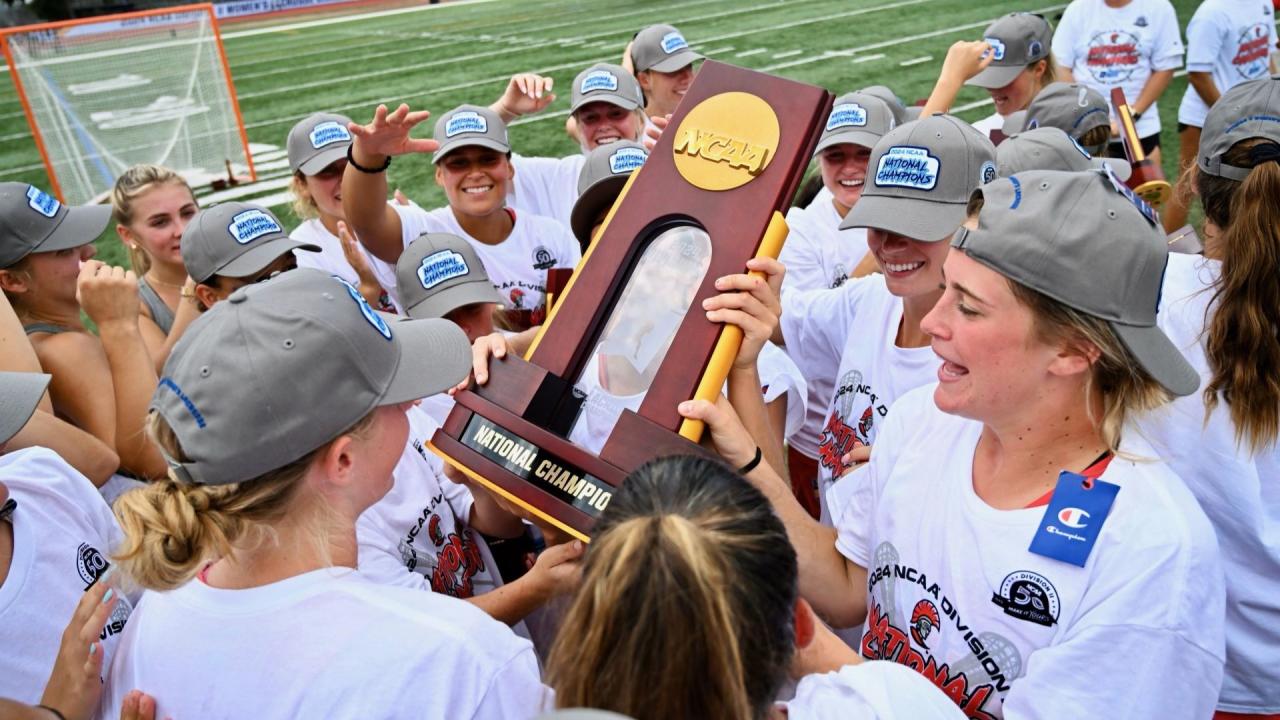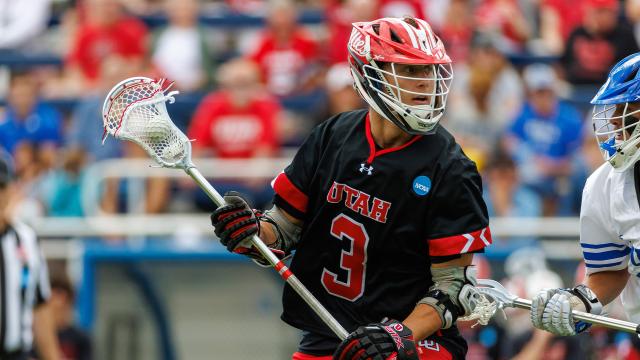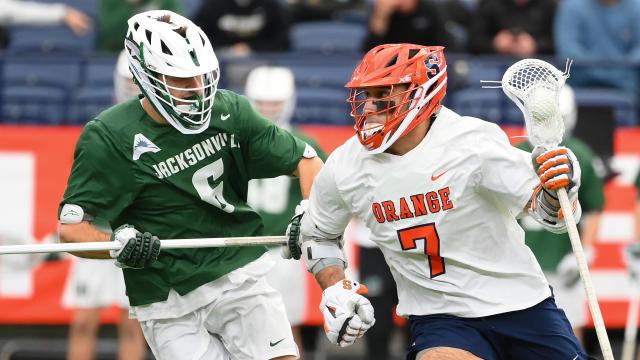
What NCAA Tournament Expansion Means for Division II Lacrosse
The NCAA Division II men’s and women’s lacrosse tournament brackets are expanding for the upcoming season, with the NCAA committees for both sports finalizing the details after the formal approval was passed at the NCAA Convention last January.
The men’s bracket is expanding from 12 to 16 teams, while the women’s bracket is expanding from 16 to 24 teams. This is the first expansion for both brackets since 2019.
“We’ve been working on this for over a year, and we’re excited that more teams will now have a chance to be involved with the championship experience,” said Doug DeBiase, who has served as chair of the NCAA Division II women’s lacrosse national committee for the past two years.
In addition to the expansion, both brackets will now include automatic qualifiers (AQ) for conference champions, something that is common in other NCAA championships but has not been utilized in Division II men’s and women’s lacrosse. Conferences must have at least six teams that sponsor lacrosse in order to be AQ eligible.
“The conference championship games will mean something even more now, because you know that if you win, you get into the tournament,” said Greg Paradine, men’s coach at Lenior-Rhyne. “That hasn’t always been the case for all conferences.”
The NCAA men’s tournament bracket will continue to be split into North and South Regions, with the field equally divided with eight teams from each region. The 2025 men’s bracket will feature nine AQs coming from four conferences in the North and five in the South.
AQ conferences in the North Region are the Central Atlantic Collegiate Conference (CACC), East Coast Conference (ECC), Great Midwest Athletic Conference (GMAC), and Northeast-10 (NE10). AQ conferences in the South Region are Conference Carolinas (CC), Great Lakes Valley Conference (GLVC), Peach Belt Conference (PBC), South Atlantic Conference (SAC), and Sunshine State (SSC).
Also, by agreement in the South Region, the Peach Belt AQ will feature Rocky Mountain Athletic Conference (RMAC) teams competing with Peach Belt teams for that one AQ spot.
The remaining spots (non-AQ) in both men’s regions will be filled with at-large selections. The criteria for picking the at-large teams remains the same as the current selection process. Once the selections are made, the teams will be seeded Nos. 1-8 in each region based on the current criteria.
Paradine, who led Lenoir-Rhyne to the 2023 national championship and a national runner-up finish in 2024, realizes that building a strong resume will still be important as teams fight for limited at-large spots.
“All the criteria, like playing a strong schedule and winning as many games as possible, are still going to be important,” he said. “But overall, this is going to be great for Division II because it’s giving more teams access to the championship opportunity.”
There were no changes announced to the regional format of the men’s tournament, meaning teams will not be shifted between the two regions.
For the women’s championship, the bracket will now include AQs from 11 leagues: CACC, CC, ECC, GLVC, GMAC, Gulf South, NE10, PSAC, RMAC, SAC and SSC.
Adding AQs will allow some conferences to have an NCAA tournament representative for the first time ever, providing access to the postseason that has typically not been previously available.
“This sure makes it clear that as a conference, you don’t want to lose your AQ eligibility,” said Grant Kelem, who has led Flagler into the NCAA women’s tournament in the South Region in each of the past two seasons. “You better do everything you can to keep at least six teams.”
With the AQ added, Kelem sees the potential for an increase in high-quality regular-season matchups.
“I think the AQ now takes some of the scheduling gamesmanship out of the equation,” he said. “Coaches can schedule games against top-caliber teams, knowing that they still have a path to the tournament through the conference championship AQ.”
DeBiase confirmed that the women’s tournament format will maintain its current emphasis on regionalization, with teams playing only within their region until reaching the national semifinal round. It’s likely that the top two seeds in each of the four regions will be awarded opening-round byes.
To maintain balance in the total number of teams that compete in each region, some shifts are being made within the women’s regional alignment. The CACC has moved from the Atlantic Region to the East Region, and the Mountain East and SAC are now in the Atlantic Region.
The latest expansion is the third one for the men’s tournament since 2013, when it went from four to eight teams. The men’s field then grew from eight teams to 12 in 2019.
The women’s NCAA field has expanded five times over the past 15 years, growing from four to six teams in 2009, to eight teams in 2013, to 12 teams in 2016 and then to 16 teams in 2019.
The expanded tournaments for both the men’s and women’s game reflect the continued growth of lacrosse across the D-II landscape. There are currently 80 Division II men’s teams and 112 women’s teams.
“I think adding the AQs for the tournament may help us to see even more growth, with perhaps more teams adding the sport and more conferences reaching the six-team minimum to become AQ eligible,” DeBiase said. “I like the trend that Division II women’s lacrosse is moving in, and I think it’s going to keep getting better in the next few years.”
Paul Ohanian
Paul Ohanian has worked at USA Lacrosse since 2006 and is currently the senior manager of program content. Prior to joining USA Lacrosse, he served as SID at a Division III school with a strong lacrosse tradition and learned to appreciate the commitment and passion that athletes at all levels bring to the game.

Related Articles



